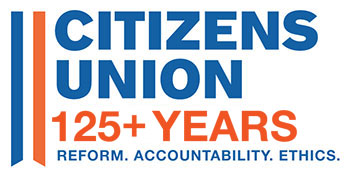Originally Published: February 24, 2012
Former AG details legal framework for a constitutional amendment and statute
Robert Abrams, the former top legal officer of the state from 1979-1993 and former member of the New York State Assembly – whose own district in the 1960s was obliterated because he was a rising reform advocate – today personally announced that he believes that the strongest legal course for Governor Cuomo to resolve the current redistricting situation and achieve the greatest reform is one that secures the passage of a constitutional amendment and statute that would create a permanent independent redistricting process in New York State.
Former Attorney General Abrams today outlined the legal framework for a permanent reform solution and called upon the State Legislature and Governor to act to ensure New Yorkers never again face the same partisan gerrymandering that infected this year’s district lines proposed by the Legislative Task Force on Demographic Research and Reapportionment (LATFOR). While Abrams emphasized the importance of permanent reform, he reiterated the need for any agreement to include improvement of the current gerrymandered lines for 2012 issued by LATFOR.
“We need permanent reform, instead of repeating the predictable cycle of outrage that only ends with the poisonous partisan redistricting system still intact,” said Abrams, who is also President of the Citizens Union Foundation. “Even if this year’s lines are vetoed, we face an uncertain outcome in the courts. At best, we may win the redistricting battle but will lose the war because the courts will not change the redistricting process for the future. That’s why it’s essential we obtain a permanent change to redistricting now through an amendment to our state constitution.”
Attorney General Abrams’s vision for a constitutional amendment, which is consistent with that of Citizens Union’s, would include the following parameters for a permanent independent redistricting process:
- An independent redistricting commission based on the Iowa model that draws and proposes the districts and requires legislative approval of the plan.
- A commission comprised of equal representation from the four legislative leaders that ensures a meaningful role for the minority party conferences’ appointees, and includes for the first time appointees who are not enrolled in either major political party.
- A commission staff that is appointed by the commission and is also independent.
- If the legislature has a role in approving the commission’s district lines, limits need to be placed on any amendments to such lines and there must be rules to ensure that the minority party conferences are involved in such approval.
- Transparency and meaningful public input through requirements that all relevant data and draft plans be released in advance of extensive public hearings around the state, as well as specific requirements that any population deviations be explained in detail by the commission.
- Specific criteria that prohibit partisan gerrymandering and the favoring or disfavoring of any incumbent or candidate, protect communities of interest, and better ensure that the voting rights of minority communities and language minorities are fully protected.
The former Attorney General is urging the State Legislature and Governor to enact such an amendment in this legislative session so it may be put to the voters as early as 2013.
In addition, Attorney General Abrams emphasized that New Yorkers cannot merely accept the legislature’s promise of a constitutional amendment. They must have a law in place this year that mirrors the constitutional amendment to ensure that both houses pass the constitutional amendment a second time. According to Mr. Abrams, such a statute would take effect if and only if the legislature failed to pass the constitutional amendment to give the voters the opportunity to pass it.
If the legislature fails to agree to these terms or the extreme gerrymanders of the 2012 lines are not addressed, Abrams believes the Governor should follow through on his veto threat.
